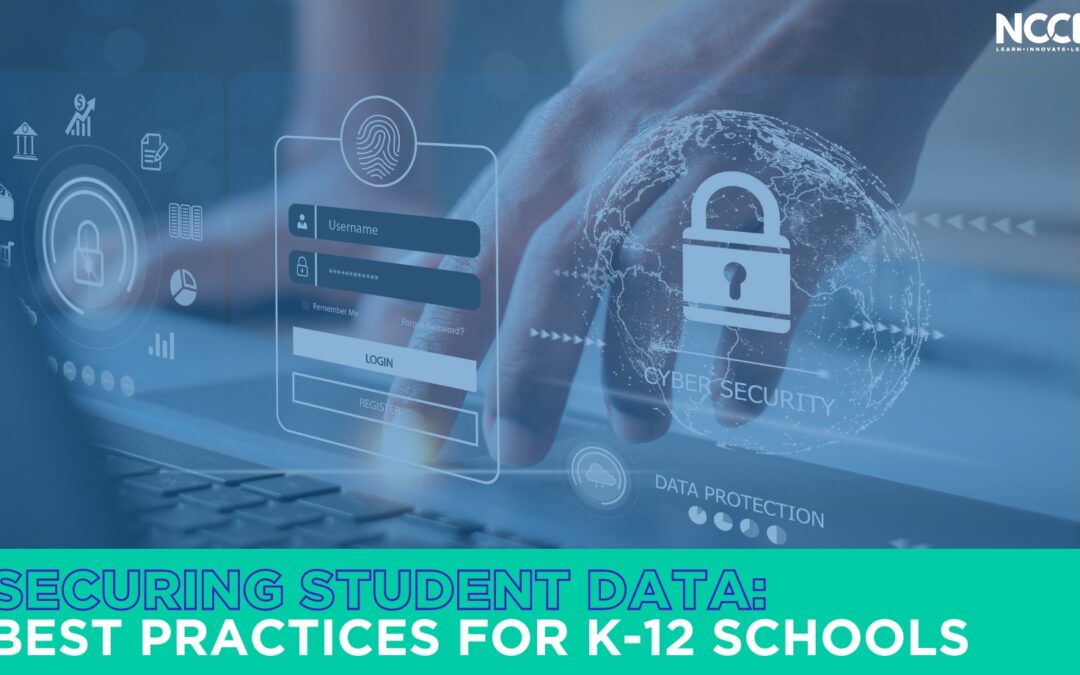As every aspect of a student’s life becomes increasingly digitalized, new challenges have emerged regarding security and protecting student data. At NCCE (Northwest Council for Computer Education), we know educators today need to understand more than just how to educate their students; they also need to address and protect against security concerns.
The Importance of Securing Student Data
Securing student data is paramount in the current digital age. Students’ personal information, academic records, and even behavioral data are stored electronically, making them susceptible to cyber threats. Unauthorized access to this sensitive information can lead to identity theft, privacy violations, and significant emotional and psychological harm to students and their families.
Furthermore, breaches can tarnish the reputation of educational institutions, leading to a loss of trust among parents and the community. In the interconnected online world, threats to student data come from various sources, including cybercriminals, phishing scams, malware, and even insider threats. This makes it essential for educators to implement robust security measures to protect their students.
Best Practices for Protecting Student Data
There are several proactive steps that educators and school administrators can take to safeguard student data in a digital environment. Here are some practical measures to consider:
1. Use Strong Passwords and Multi-Factor Authentication
Encourage the use of complex passwords and change them regularly. Implement multi-factor authentication (MFA) to add an extra layer of security.
2. Regularly Update Software and Systems
Ensure all software and operating systems are up-to-date with the latest security patches. Use reliable antivirus and anti-malware programs.
3. Conduct Regular Security Audits
Perform routine audits to identify vulnerabilities and address them promptly. Regularly review access logs to monitor for unauthorized access.
4. Educate Staff and Students on Cybersecurity
Provide ongoing training and resources for staff and students on recognizing phishing attempts and other cyber threats. Promote awareness of safe online practices and the importance of data security.
5. Implement Data Encryption
Encrypt sensitive data both in transit and at rest to protect it from unauthorized access. Use secure connections (HTTPS) for all online communications.
6. Limit Access to Sensitive Information
Ensure that access to student data is restricted to authorized personnel only. Use role-based access control (RBAC) to manage permissions effectively.
7. Develop a Response Plan for Data Breaches
Have a clear, actionable plan in place to respond to data breaches. Regularly update and practice the plan to ensure readiness in the event of an incident.
8. Use Secure Cloud Services
Choose cloud service providers that comply with strict security standards. To maintain data protection, regularly review and update cloud security settings.
9. Get Everyone Involved
The IT department alone cannot protect the organization. Actively involve students and staff in learning opportunities and challenges. Working together, we can protect students’ futures.
At NCCE, we are ready to work with school and district educators to introduce cybersecurity as a united team effort. Our team of experts can help you implement best practices, understand their importance, and ensure your student data is secure. Visit our website or contact us today for more information about our one—and two-day Cybersecurity workshops for educators.
Helping you create a safer digital environment for students and schools.

